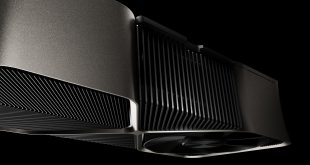Although leaked roadmaps of Advanced Micro Devices indicate that the company’s next year’s accelerated processing units and central processing units will all be made using 14nm FinFET fabrication process at GlobalFoundries, this does not mean that AMD plans to cease using Taiwan Semiconductor Manufacturing Co. as a production partner.
For many years AMD has used both GlobalFoundries and TSMC as its key manufacturing partners. GlobalFoundries focused on higher-end APUs and CPUs, whereas TSMC produced GPUs, inexpensive APUs as well as semi-custom APUs. Last year AMD expanded its orders to GlobalFoundries with select GPUs and semi-custom system-on-chips for game consoles. Next year all key APUs and CPUs from AMD, including “Summit Ridge”, “Bristol Ridge”, “Basilisk” and “Styx” will be made using 14nm FinFET process technology at GlobalFoundries.
Taiwan Semiconductor Manufacturing Co. will likely continue to produce at least some graphics processors for AMD next year. Besides, a quick look at activities of AMD engineers at LinkedIn reveals that many people are (or, perhaps, were) working on accelerated processing units to be made using 16nm FinFET process technology at TSMC. The engineers do not reveal code-names of projects they are (or were) working on.
Many fabless chip designers are not confident of manufacturing capacities and yields of products made using various FinFET manufacturing processes. To mitigate risks associated with yields and production capacities, numerous developers create similar chips for different contract makers of semiconductors so to ensure stable supply.
AMD could take the approach and use TSMC as its second source if it needs. However, given that AMD is cash strapped and does not require extremely high volumes of APUs and CPUs, it is unlikely that the company is re-designing any of its PC chips for TSMC’s process technology. What is possible is that some of the company’s engineers are working on certain semi-custom APUs to be made using 16nm FinFET process technology. Perhaps, Microsoft and Sony would like to get more energy-efficient system-on-chips for Xbox One and PlayStation 4 next year and are willing to pay for appropriate redesigns.
AMD did not comment on the news-story.
Discuss on our Facebook page, HERE.
KitGuru Says: While AMD will continue to use TSMC as a manufacturing partner, it is obvious that GlobalFoundries is set to become a key producer for the chip developer. AMD wants to re-use maximum amount of chip building blocks it develops across its product line, which is possible only if it uses one foundry partner and one process technology for a wide array of its chips.
 KitGuru KitGuru.net – Tech News | Hardware News | Hardware Reviews | IOS | Mobile | Gaming | Graphics Cards
KitGuru KitGuru.net – Tech News | Hardware News | Hardware Reviews | IOS | Mobile | Gaming | Graphics Cards




The title points to one direction, and then the article slowly concludes on the opposite direction.
In simple terms this 16nm node from TSMC is for Consoles not for anything.
⇛➤➤⇛GET PAlD AT h0me with Google Work@nc20::
,,,
➨➨➨➨https://FirstPlaceCanyon.com/daily/tab…
Its actuelly a smart move for acompany not to lay ALL!! their eggs in one basket.
and als reserve extra production capacity during negotiations, for if they need it. 😉
< col Hiiiiiii Friends….uptil I saw the paycheck saying $8736 , I have faith that my neighbour woz actualy receiving money parttime from their computer. . there friends cousin has done this 4 only about thirteen months and by now repaid the loans on there mini mansion and got a great GMC . visit their website SEE FULL DETAIL
~~~~~~~~~~~~~~~~~~~~~~~~~~~~~~~~~~~~~~~~~~~~~~~~~~~~~~~~~~~~~~~~~~~~~~~~~~~~~~~~~~~~~~~~~~~~~~~~~~~~~~~~~~~~~~~~~~~~~~~~~~~~~~~~~~~~~~~~~~~~~~~~~